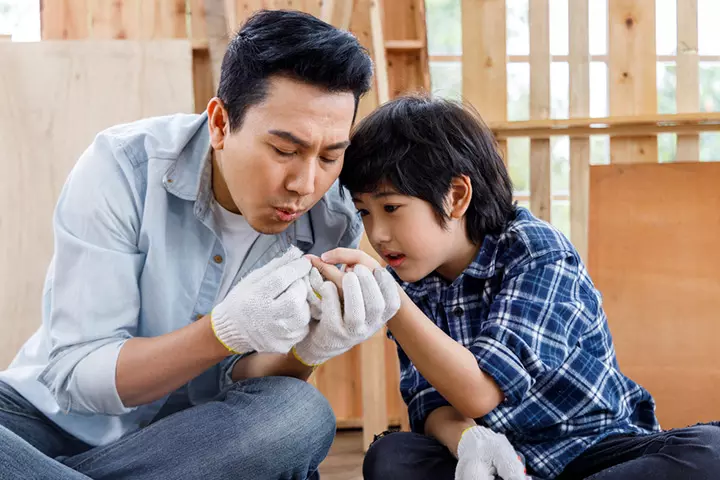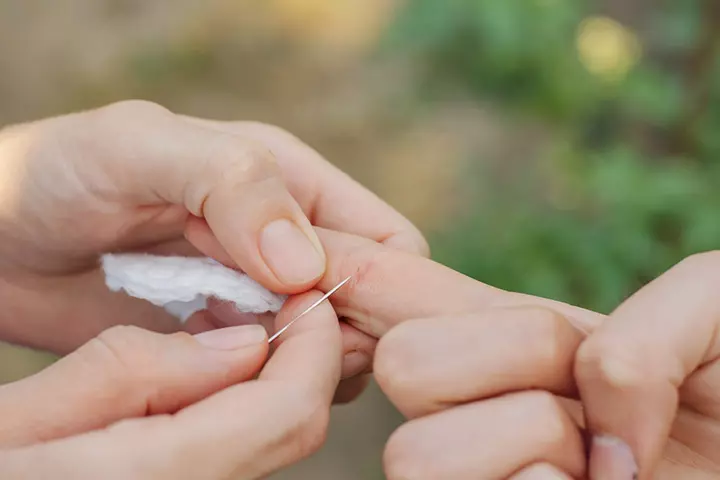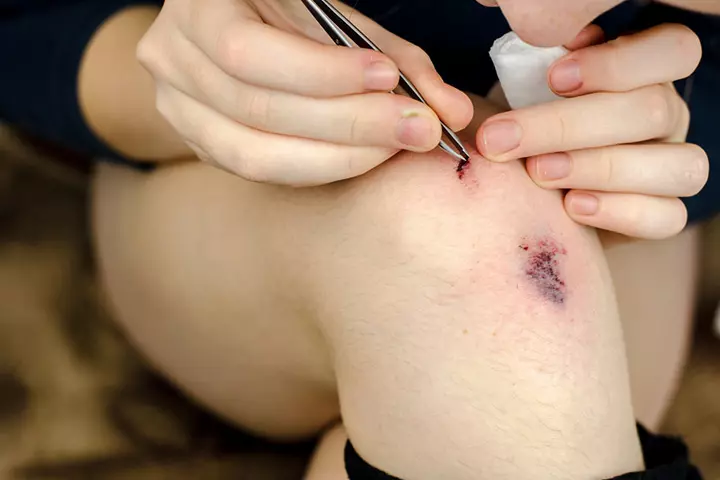
Image: Shutterstock
The journey of parenthood involves helping your children with their bruises and injuries. Your kids are bound to get hurt at some point while playing or doing other activities. It is important that you, as a parent, know what to do in such situations without having to rush to the emergency room every time your child gets hurt. One of the most common forms of injury that children get is from splinters. Read on to know how you can deal with a splinter injury.
What Exactly Are Splinters?
Image: Shutterstock
Splinters refer to sharp pieces of wood, glasses, or similar kinds of materials that get lodged inside a person’s skin. They cause redness, swelling, and itching in and around the affected area. If left untreated, the splinters can lead to more serious injuries and infections.
Children are very easy victims of splinter injuries. Especially in the summer months, when they are out and about playing in the fields wearing less protective clothing, they are prone to get splinters. Doing arts and crafts projects can also lead to similar kinds of injury.
Can You Leave A Splinter In?
Image: Shutterstock
Since the skin is meant to protect humans from any infections, any break in the skin is a potential threat. Therefore, it is not really a good idea to let the splinter sit inside the skin. Splinters made of any other materials than organic ones should be removed as soon as possible.
Children’s skin is way more sensitive than adults. It is thus never a good idea to let the splinters sit in their skin because that might lead to swelling and inflammation. If the splinter has pierced rather deep, the chances of it developing into infection is also there. However, a splinter injury generally does not lead to tetanus unless the object inside the skin is contaminated. Moreover, if your child is immunized with tetanus vaccination, then they should be safe.
Besides inflammation and swelling, a splinter that is left inside the skin can cause other troubles too. For example, if the splinter is rather big in size and is not taken out in time, it can disrupt other bodily functions. It can cause problems like limping in some children, depending on where it has pierced the skin.
How Do You Take Out A Splinter?
Image: Shutterstock
If your child has a splinter injury, taking it out is not a difficult task at all if you follow certain steps. These steps are discussed below.
1. Clean The Affected Area
Image: Shutterstock
The first step to get a splinter out is cleaning the affected area. Make sure you have washed your hands thoroughly before touching the wound to avoid any further infection. You can then wash the affected area with an antibacterial soap and dry it with a clean towel.
2. Inspect The Wound
To decide your next course of action, you should take a good look at the injury. You should have a clear idea about how small or big the splinter is and where exactly it has pierced your child’s skin. In case the splinter is rather small in size, you can use a magnifying glass to inspect it better.
3. Sterilize Your Tool Of Removal
Image: Shutterstock
To take the splinter out, you will need to sterilize your tools first. Needles and splinters are commonly used as the removal tools. If you are using a needle, you can use a flame and alcohol swab to sterilize it. For tweezers, rubbing alcohol on it will sterilize it.
4. Take The Splinter Out
Image: Shutterstock
If one end of the splinter is visible, hold it with the tweezers and take it out. In case the splinter is not sticking out, you might have to use the needle to bring it out of the skin. No matter what you use, make sure not to break the splinter as then some parts of it might stay inside the skin and cause infection.
5. Treat The Wound
After you are done removing the splinter, wash the wound with alcohol and apply some petroleum jelly on it. You should then cover the wound with a bandaid. Make sure to keep an eye on the wound so that your child does not touch it and hinder the healing process.
Splinter wounds are one of the most common wounds that parents have to deal with. Unless it is extremely severe, you do not need to panic as you can do the first aid yourself. However, if the wound keeps getting worse even after removing the splinter or if you are unable to remove the splinter yourself, you should visit a doctor. In the comments, let us know your experiences of dealing with a splinter wound!


















